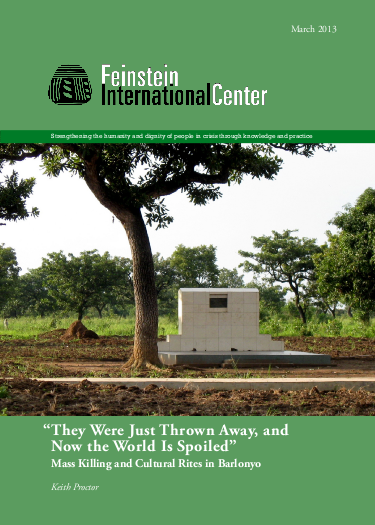
In the aftermath of violence, proper treatment of the dead provides a vital consolation for survivors and their communities. This recognition of the bonds that tie the living to the dead has become a key feature of international human rights, encapsulated in the United Nations’ Basic Principles and Guidelines on the Right to a Remedy and Reparation for Victims of Gross Violations of International Human Rights Law and Serious Violations of International Humanitarian Law. But in the case of mass killings and mass graves, there may be no consensus on what “proper treatment” of the dead entails. Drawing on interviews conducted in 2011 with survivors and leaders from Barlonyo, Uganda – the site of a large-scale massacre perpetrated by the Lord’s Resistance Army in 2004 – this report analyzes how rapid cultural transformations have complicated what proper treatment of the dead entails, and, therefore, the right to satisfaction. By paying careful attention to how death and remembrance rituals have changed over time among the Langi, the report sets out to provide a set of recommendations based on community priorities for the treatment of those who have died as a result of mass violence; and, offer insights into the cultural context in which any future programming around the proper treatment and memorialization of those killed would be undertaken.
Links
Resource collections
- UN Habitat - Urban Response Collection
- Urban Response - Urban Crisis Preparedness and Risk Reduction
- Urban Response Collection - Community Engagement and Social Cohesion
- Urban Response Collection - Economic Recovery
- Urban Response Collection - Environment and Climate Change
- Urban Response Collection - Housing, Land and Property
- Urban Response Collection - Urban Crisis Response, Recovery and Reconstruction
- Urban Response Collection - Urban Resilience